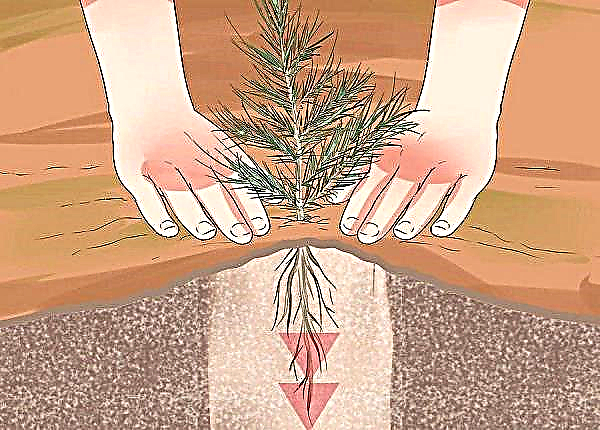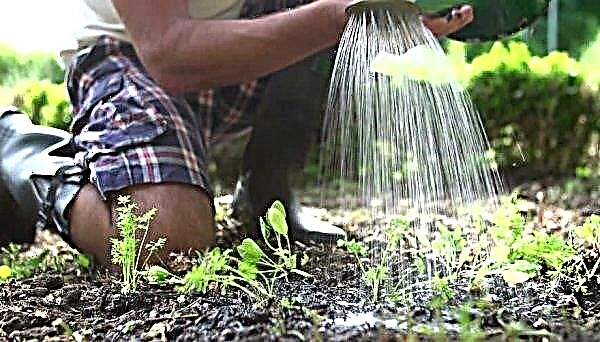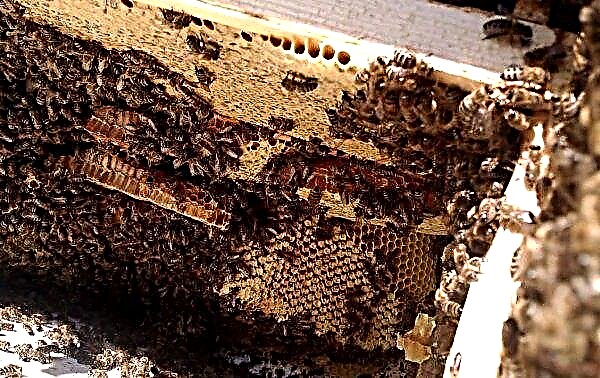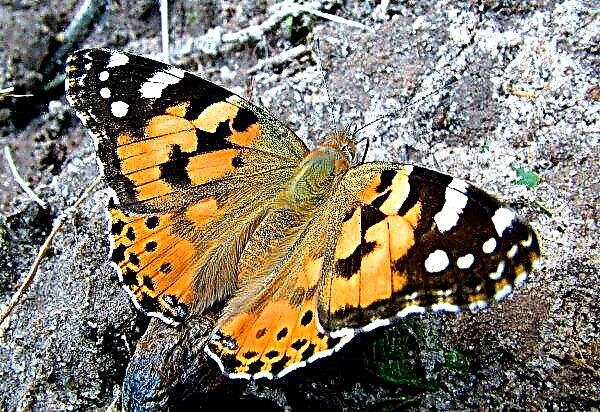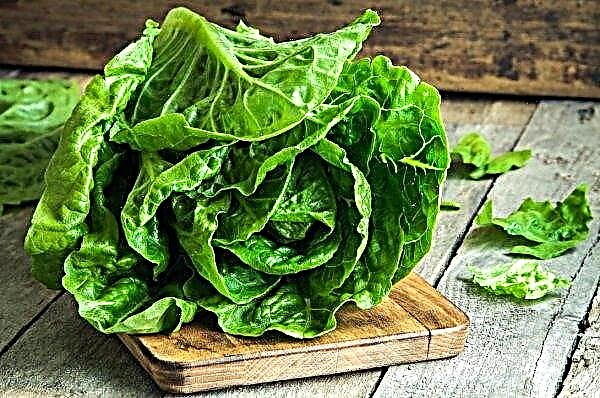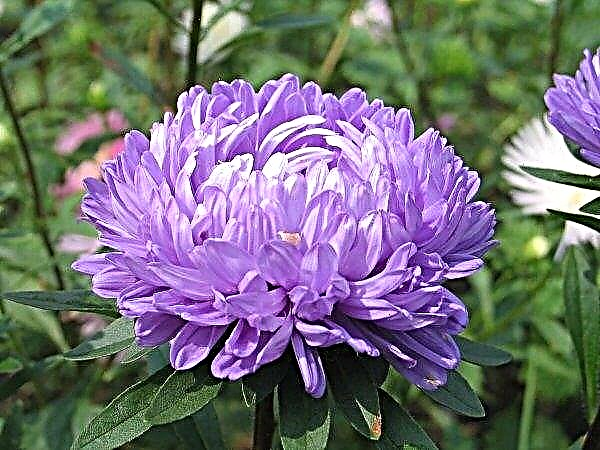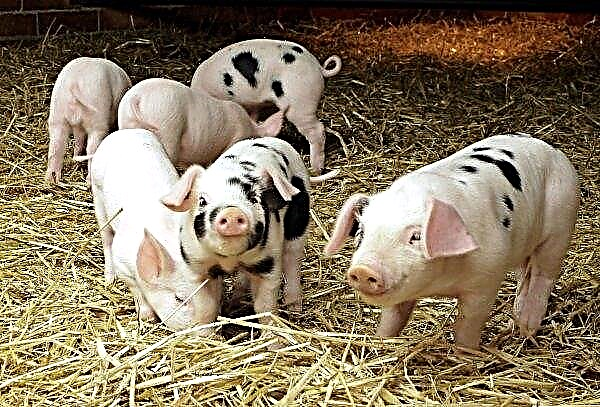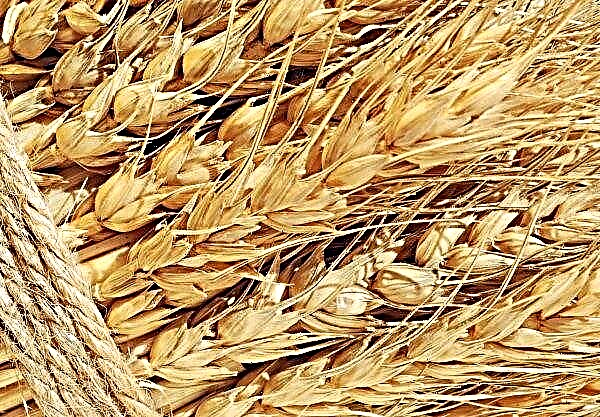In their activities, gardeners and gardeners try to use a variety of methods and technologies, which ultimately should help to get a high-quality crop of a particular crop. This also applies to strawberries, and the Frigo technology is considered the most unusual technology for its cultivation. What it is, how to plant and care for such strawberries - read in this article.
What is Frigo Strawberry?
Translated from Italian, “frigo” is cold, so the technology for growing strawberries is related to low temperatures. Its main goal is the possibility of year-round cultivation of culture, thanks to which gardeners from around the world have long appreciated Dutch innovation.
The main thing to understand: Frigo's strawberries are not a variety, but rather a collection of a wide variety of varieties, young plants which are created all the conditions for a long period of dormancy, so that you can use planting material at any time. Such conditions are organized in a carefully controlled manner, not without the participation of the cold.
Early purchase of such plants, with further cultivation on the windowsill, makes sense only if you buy repairing varieties (the first flower stalks are removed, and after repeated summer flowering there is every chance to get a good quality fruit crop).Important! With the early acquisition of Frigo seedlings and the further maintenance of seedlings at room conditions, an early onset of development is possible, after which once flowering varieties will no longer be able to bring a full summer crop.
Frigo classification
Strawberry Frigo is divided into 4 main groups, belonging of plants to which is based on the diameter of their neck and the number of peduncles:
- A + extra - this group includes seedlings of the most expensive varieties of strawberries, the yield of which reaches 20 tons per 1 ha. The diameter of the neck of class berries reaches 20–24 mm, and up to 5 peduncles are formed on one bush. Fruits can be formed both on the main shoots and on the lateral processes of the bush and already in the first year of growing strawberries, up to 500 g of berries can be collected from one plant.
- A + - Another quite popular group, the fruits of which are well preserved even for a long time. When creating optimal growing conditions, up to 10 tons of crops can be harvested from 1 ha of such plantings. The diameter of the neck of the fruit of plants is slightly inferior to the similar parameters of previous crops and is 15–18 mm with 2–3 peduncles on 1 bush. Flowering and fruiting of plants is always plentiful, therefore strawberries are recommended for planting for commercial purposes and for laying fruits for long-term storage.
- AND - Plants from this class are used mainly in small areas, since each bush forms only 2 peduncles. However, the first crop can be harvested already in the first year after planting, and the total yield often reaches 4 tons per 1 ha (up to 250 g per bush). The diameter of the neck of the fruit is 12–15 mm.
- AT - this group of varietal varieties of strawberries differs significantly from previous versions, since all plants have only one peduncle and can bear fruit only in the second year after planting. In the first year, flower stalks are cut from the bushes. The diameter of the neck is 8–12 mm. Typically, varieties from this group are selected only for home cultivation, since on an industrial scale such a solution is unprofitable.

Advantages and disadvantages of technology
Over the years of successful use of the Frigo strawberry growing technology, it has proven its effectiveness, which is primarily the merit of its positive qualities.
- The indisputable advantages of this method of growing crops include the following characteristics:
- the possibility of year-round cultivation of berries;
- compact sizes of planting material;
- excellent adaptive qualities that allow you to grow Frigo strawberries in almost any conditions (this is due to the presence of only the root system and seedlings on seedlings);
- absence of disturbances of biorhythms of cultivated plants at the stage of their storage;
- the ability to adjust the timing of strawberry planting at a constant place of growth (in this way, the influence of spring frosts can be avoided);
- high crop yields;
- excellent level of drought tolerance of plants.
Did you know? Strawberries are a storehouse of vitamin C. Eating only 100 grams of berries per day will provide the body with 98% of the daily norm of this important element.
- Unfortunately, with all its positive qualities, Strigo Frigo also has some less attractive characteristics, the main of which will be:
- the high cost of processed planting material and equipment for its productive storage;
- difficulties in applying technology in the northern regions of the Russian Federation.
With a responsible approach to the application of Frigo technology and sufficient funding, it can be an excellent solution to increase the abundance of harvested strawberries, which is especially valuable when it is cultivated on an industrial scale.
Agrotechnics growing and care
As with growing any other kind of strawberry, the successful use of Frigo technology provides for the observance of several basic rules, starting from the choice of optimal planting dates and places for growing crops, ending with further post-planting care for strawberries.
Landing time
Frigo strawberry seedlings can be stored in a packed form for a rather long time, but after unpacking, plants will have to be planted on the site in the shortest possible time. The beds for seedlings are prepared in advance, adding varietal fertilizers for strawberries to the substrate available on the site. Typically, berry bushes of this species are planted in open ground from April to August, while planting in closed ground can be performed year-round, at any time convenient for you.
The main thing in this matter is not to keep seedlings with open roots for a very long time.and root it as soon as possible after being removed from the package. If, for some reason, unpacking of strawberries was done earlier, then it is better to plant young plants in separate cups (peat containers) for a while, from which they will be transplanted to the site in the future upon the occurrence of steady heat.
Always consider the timing of flowering and fruiting of each selected variety. For example, if a crop is planted in May, then in about a month, for most varieties, a flowering period will begin, and after another 30 days it will be possible to begin harvesting the fruits. A delay of 2 weeks for planting events shortens the fruiting period by about a week and negatively affects seedlings (especially Frigo strawberries of class A +, which is always better to plant earlier).
Class A strawberry seedlings can be stored longer than othersTherefore, it can be planted without significant risk in the middle of June. True, it’s not worth pulling too far with planting measures, as this will negatively affect fruiting (usually its peak occurs in late August or early September, when night temperatures decrease).Important! Frigo's strawberry roots can be opened no longer than 15 minutes after being removed from the package. In the future, after soaking, you need to immediately transplant the plant to the garden so that they do not have time to dry.
 When growing strawberries in the cold season, this is fraught with a decrease in the quality characteristics of berries and a deterioration in their taste. In addition, the likelihood of root rot significantly increases.
When growing strawberries in the cold season, this is fraught with a decrease in the quality characteristics of berries and a deterioration in their taste. In addition, the likelihood of root rot significantly increases.Seat selection and landing
To plant Frigo strawberries, it is advisable to select only smooth, cleaned from weed areas with well-fertilized soil. It is good if the created beds will rise above the rest of the plot by 20 cm, which will precisely protect the strawberries from possible flooding by groundwater. The best predecessors for the described plants will be mustard, legumes, rapeseed and other siderata plants, followed by plowing into the soil in spring. Together with manure introduced in the fall (800–1500 g per 1 m²), they will be an excellent fertilizer for strawberries for the entire growing season.
Frigo strawberry planting scheme - 35 cm between individual bushes and up to 50 cm between rows of rows. Deepening of planting material into the soil should be carried out no more than 15 cm, so in the designated places you need to organize the wells of precisely this depth, carefully placing the plants in them.
The roots of the seedlings are carefully straightened, taking care of the absence of bent or tangled places (the roots should be laid down). The heart of plants should always rise above the surface of the earthotherwise, the strawberry bushes will hurt (especially when the irrigation fluid is systematically hit the plant growth point).
To preserve soil moisture for a long time and protect the plantings from excessive weed germination, it is useful to mulch the plantings with peat crumbs, straw or shredded bark, but do not forget that such a shelter will have to be periodically cleaned by airing strawberry plantings.
Watering frequency
For strawberries grown according to the Frigot technology, sufficient moisture of the substrate is just as important as for ordinary plants of this crop, therefore, in the first 7-10 days after planting seedlings on the site, they need to be constantly kept moist. watering at least 1 time in 4-5 days (in the absence of natural precipitation).  During the flowering period and immediately after it, the frequency of application of the irrigation liquid is reduced to 1 time in 7 days so that the strawberry fruits do not begin to break apart from excessive moisture. In general, it’s better to monitor the state of the upper soil layer and moisturize it at the first signs of soil drying out, using drip irrigation. If a watering can is used to make irrigation fluid, then it is important that the stream is thin and does not erode the rhizome.
During the flowering period and immediately after it, the frequency of application of the irrigation liquid is reduced to 1 time in 7 days so that the strawberry fruits do not begin to break apart from excessive moisture. In general, it’s better to monitor the state of the upper soil layer and moisturize it at the first signs of soil drying out, using drip irrigation. If a watering can is used to make irrigation fluid, then it is important that the stream is thin and does not erode the rhizome.
Fertilizer application
After fertilizing the soil before planting strawberries, the next top dressing is performed during the formation of fruit ovaries, and urea is used as a suitable fertilizer at this stage: 15 g of substance per 10 liters of water.  At the end of fruiting, if the plants remain the next year, the mulch layer is removed, and the bushes themselves are fed at the rate of 0.5–0.8 kg of compound fertilizer per 100 m² of territory. A mixture of potassium sulfate, in the calculation of 0.2-0.3 kg per hundred square meters, can replace complex fertilizer. In order not to burn the roots of the crop, it is better to apply fertilizers only after the next watering of the plantings.
At the end of fruiting, if the plants remain the next year, the mulch layer is removed, and the bushes themselves are fed at the rate of 0.5–0.8 kg of compound fertilizer per 100 m² of territory. A mixture of potassium sulfate, in the calculation of 0.2-0.3 kg per hundred square meters, can replace complex fertilizer. In order not to burn the roots of the crop, it is better to apply fertilizers only after the next watering of the plantings.
Did you know? The largest strawberry fruit officially registered by the Guinness Book of Records was grown in the garden of Japanese farmer Koji Nakao in 2015. The weight of strawberries was 250 g, which was a surprise for the gardener himself.
Pest and Disease Control
In case of violation of the agrotechnology of growing Frigo strawberries, it can be affected by all the same ailments as other varieties of berries, and the most common pests and diseases are the following:
- Gray rot - fungal disease, manifested in brown soft spots on the entire surface of the fetus (later the berry completely rots). In order to prevent the spread of the disease in the area, it is important to detect and remove damaged fruits in a timely manner, otherwise at the first strong wind or rain, pathogenic spores will be spread throughout the area. Of the chemical means of protecting strawberry plantations, copper chloroxide (1 tablespoon per 10 liters of water) will be the most effective, which is used to double-process the plantings: before flowering bushes and after harvesting.

- White, brown, brown spotting, manifested in extensive spots of the corresponding color on the leaf plates. In case of mass damage, the plants are treated with copper chloride, according to the same scheme as in the previous case.

- Powdery mildew - a fungal disease affecting all the aerial parts of strawberry bushes. The affected areas are covered with white coating and soon begin to rot, which leads to the death of the entire bush. To combat powdery mildew, sulfaride is used (2 tbsp.spoons per bucket of water), and plants are sprayed twice: before flowering bushes and immediately after harvesting. For the second treatment, a weak solution of potassium permanganate can be used, but in any case, all affected parts of the plant (especially berries) must be picked and burned.

- Slugs, snails and millipedes - The main pests of strawberries in an open area. Any of them can cause significant damage to the future fruit harvest, therefore, with a massive infestation of the pest, it is recommended to use the metaldehyde preparation, which is simply laid out on the surface of the soil after harvesting. It is best to cultivate plots in the second half of September.

Winter preparations
To extend the laying period of flower buds and protect strawberry plantings from lowered winter temperatures, as a covering material, a perforated film or lutrasil is usually used, which simply covers the beds prepared for winter. If you leave the protection until the flowering plants, this will not only increase crop productivity, but also accelerate fruiting. Shelter this does not apply, because if you do not have time to remove it before the onset of steady heat, the soil under it will not be able to warm up well and fruiting will be delayed by about 7 days.
If you leave the protection until the flowering plants, this will not only increase crop productivity, but also accelerate fruiting. Shelter this does not apply, because if you do not have time to remove it before the onset of steady heat, the soil under it will not be able to warm up well and fruiting will be delayed by about 7 days.
Harvesting and storage
The terms of collection and the features of further storage of Frigo strawberries largely depend on the cultivated variety, therefore, despite the nuances of harvesting planting material, it is better to focus on general information regarding a particular plant. The first crop is harvested on average 8-10 weeks after planting seedlings, and then they are watered again and await further fruiting.
It is advisable to remove the berries from the bushes along with the stalks, carefully placing them in vegetable boxes and placing them in a cool place, where the fruits can be stored for up to several weeks without losing their marketability and taste. For longer storage, you will have to freeze the crop or process the berries for conservation: preserves, jams or compotes.
In general, Strawberry Frigo is an excellent solution for both small farms and for growing on an industrial scale, the main thing is to follow all the requirements for planting and further care for the grown seedlings.




